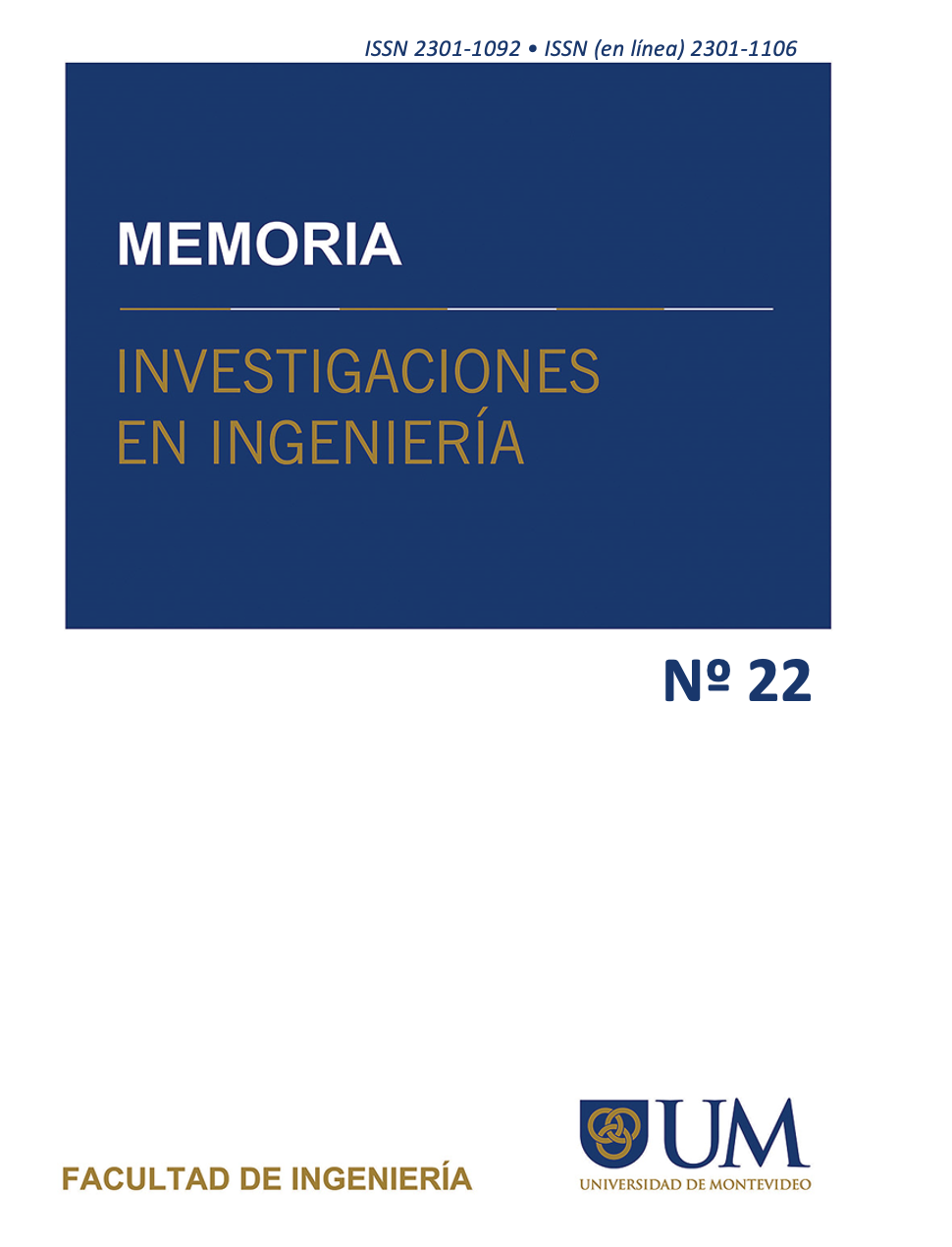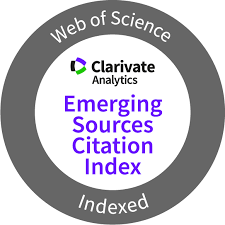Analysing the COVID-19 disruptive impact on Montevideo’s Supply Chains
DOI:
https://doi.org/10.36561/ING.22.3Keywords:
COVID-19, Logistics Management, Supply chain resilience, Bullwhip effectAbstract
Globally, COVID-19 reached unprecedented levels of contagion, affecting the social meetings, public spaces, and many everyday aspects. During the first days of the pandemic, supply chains were severely impacted by a great uncertainty in socio-economic terms, causing irrational variations and the inability to forecast demand. In this paper, the effect of the COVID-19 pandemic on the behaviour of different companies is analysed based on the variation in supply and demand of consumer-packaged goods. The pandemic outbreak disruption, the bullwhip effect caused by demand fluctuations, and the resilience of different companies were studied. A multiple case study methodology is used to analyse the decision-making process of fourteen different companies, from diverse sectors in Uruguay, affronting the pandemic. The paper’s main findings include the identification of disruption and operation risks along with coordination in supply chain management during the first four months of the pandemic. Moreover, due to the necessity of sanitation and comestibles, and the fear of stockout, consumers’ demand was uncertain, and the bullwhip effect was observed in critical channels of some products. Finally, the resiliency and robustness of the affected companies were studied and good practices for a resilient and robust response to the pandemic were identified and analysed.
Downloads
References
Ivanov, D.; Predicting the impacts of epidemic outbreaks on global supply chains: A simulation-based analysis on the coronavirus outbreak (COVID-19/SARS-CoV-2) case, 2020, Transportation Research Part E: Logistics and Transportation Review, 136, 101922. https://doi.org/10.1016/j.tre.2020.101922
Sharma, A., Adhikary, A., & Borah, S. B.; Covid-19′s impact on supply chain decisions: Strategic insights from NASDAQ 100 firms using Twitter data, 2020, Journal of Business Research, 117(May), 443–449. https://doi.org/10.1016/j.jbusres.2020.05.035
OECD Secretary General; Covid-19: SME Policy Responses, 2020, 1–55. https://oecd.dambroadcast.com/pm_7379_119_119680-di6h3qgi4x.pdf
National Academies of Sciences Engineering and Medicine; Freight Transportation
Resilience in Response to Supply Chain Disruptions, 2019, https://doi.org/10.17226/25463
Sheffi, Y.; Preparing for disruptions through early detection, 2015, MIT Sloan Management Review, 57(1), 31–42.
Sheffi, Y., & Rice, J. B.; A supply chain view of the resilient enterprise, 2005, MIT Sloan Management Review, 47(1).
He, Y., & Liu, N.; Methodology of emergency medical logistics for public health emergencies, 2015, Transportation Research Part E: Logistics and Transportation Review, 79, 178–200. https://doi.org/10.1016/j.tre.2015.04.007
The Guardian; Uruguay and Paraguay buck the Latin America coronavirus trend, 2020, https://www.theguardian.com/world/2020/jun/25/uruguay-and-paraguay-buck-latin-americacoronavirus-trend
Christopher, M., & Peck, H.; BUILDING THE RESILIENT SUPPLY CHAIN, 2004, 15(2), 1–13.
Lee, H. L., Padmanhaban, V., & Whang, S.; The Bullwhip Effect in Supply Chains, 1997, 93–103.
Metters, R.; Quantifying the bullwhip effect in supply chains, 1997, 15, 89–100.
Faizan, R., & Haque, A. ul.; Bullwhip effect phenomenon and mitigation in logistic firm’s
supply chain: Adaptive approach by Transborder Agency, Canada, 2015, International Journal of Supply Chain Management, 4(4), 43–51.
Holweg, M., Disney, S., Holmstro, J. A. N., & Sma, J.; Supply Chain Collaboration : Making Sense of the Strategy Continuum, 2005, 23(2), 170–181. https://doi.org/10.1016/j.emj.2005.02.008
Klibi, W., Martel, A., & Guitouni, A.; The design of robust value-creating supply chain networks: A critical review, 2010, European Journal of Operational Research, 203(2), 283–293. https://doi.org/10.1016/j.ejor.2009.06.011
Tang, C. S., Perspectives in supply chain risk management, 2006, International Journal of Production Economics, 103(2), 451–488. https://doi.org/10.1016/j.ijpe.2005.12.006
Norrman, A., & Jansson, U.; Ericsson’s proactive supply chain risk management approach after a serious sub-supplier accident, 2004, International Journal of Physical Distribution and Logistics Management, 34(5), 434–456. https://doi.org/10.1108/09600030410545463
Fan, Y., & Stevenson, M.; A review of supply chain risk management: definition, theory, and research agenda, 2018, International Journal of Physical Distribution and Logistics Management, 48(3), 205–230. https://doi.org/10.1108/IJPDLM-01-2017-0043
Falasca, M., Zobel, C. W., & Cook, D.; A decision support framework to assess supply chain resilience, 2008, Proceedings of ISCRAM 2008 - 5th International Conference on Information Systems for Crisis Response and Management, 596–605.
Brandon-Jones, E., Squire, B., Autry, C. W., & Petersen, K. J.; A Contingent ResourceBased Perspective of Supply Chain Resilience and Robustness, 2014, Journal of Supply Chain Management, 50(3), 55–73. https://doi.org/10.1111/jscm.12050
Brusset, X., & Teller, C.; Supply chain capabilities, risks, and resilience, 2017, International Journal of Production Economics, 184(September), 59–68.
https://doi.org/10.1016/j.ijpe.2016.09.008
Michelman, P.; Building a Resilient Supply Chain, 2007, Harvard Business Review, 1–7.
Ivanov, D., Dolgui, A., Sokolov, B., & Ivanova, M.; Literature review on disruption recovery in the supply chain, 2017, International Journal of Production Research, 55(20), 6158–6174. https://doi.org/10.1080/00207543.2017.1330572
Boerkamps, J. H. K., Van Binsbergen, A. J., & Bovy, P. H. L.; Modelling behavioural aspects of urban freight movement in supply chains, 2000, Transportation Research Record, 1725, 17–25. https://doi.org/10.3141/1725-03
Cardoso, S. R., Paula Barbosa-Póvoa, A., Relvas, S., & Novais, A. Q.; Resilience metrics in the assessment of complex supply-chains performance operating under demand uncertainty, 2015, Omega (United Kingdom), 56, 53–73. https://doi.org/10.1016/j.omega.2015.03.008
Ta, C., Goodchild, A. V., & Pitera, K.; Structuring a definition of resilience for the freight transportation system, 2009, Transportation Research Record, 2097, 19–25. https://doi.org/10.3141/2097-03
Tom Linton, B. V.; Coronavirus Is Proving We Need More Resilient Supply Chains, 2020, MIT.
Freitas, A. R. R., Napimoga, M., & Donalisio, M. R.; Análise da gravidade da pandemia de Covid-19, 2020, Epidemiologia e Servicos de Saude : Revista Do Sistema Unico de Saude Do Brasil, 29(2), e2020119. https://doi.org/10.5123/S1679-49742020000200008
Saunders, M., Lewis, P., & Thornhill, A.; Research Methods for Business Students, 2007, In Pearson Education. https://doi.org/10.1017/S0016756800135770
Yin, R. K.; Case Study Research: Design and Methods, 2003, Third Edition, Applied Social Research Methods Series, Vol 5 [Paperback] (p. 200). http://www.amazon.com/Case-StudyResearch-Methods-Applied/dp/0761925538
Ketokivi, M., & Choi, T.; Renaissance of case research as a scientific method, 2014, Journal of Operations Management, 32(5), 232–240. https://doi.org/10.1016/j.jom.2014.03.004
Stuart, I., McCutcheon, D., Handfield, R., McLachlin, R., & Samson, D.; Effective case research in operations management: A process perspective, 2002, Journal of Operations Management, 20(5), 419–433. https://doi.org/10.1016/S0272-6963(02)00022-0
Hobbs J. E.; Food supply chains during the COVID-19 pandemic, 2020, Can J Agr Econ, 68:171–176. https://doi.org/10.1111/cjag.12237
Lins, S., & Aquino, S.; Development and initial psychometric properties of a panic buying scale during the COVID-19 pandemic, 2020, Heliyon, 6(9), e04746. https://doi.org/10.1016/j.heliyon.2020.e04746
Viu-Roig, M., & Alvarez-Palau, E. J.; The impact of E-Commerce-related last-mile logistics on cities: A systematic literature review, 2020, Sustainability (Switzerland), 12(16). https://doi.org/10.3390/su12166492
Published
How to Cite
Issue
Section
License
Copyright (c) 2022 Matías Aresti, Felipe Algorta, Ignacio Bertoncello, Manuel Aramis Flores, Matías Crosa, Martín Tanco

This work is licensed under a Creative Commons Attribution 4.0 International License.






















